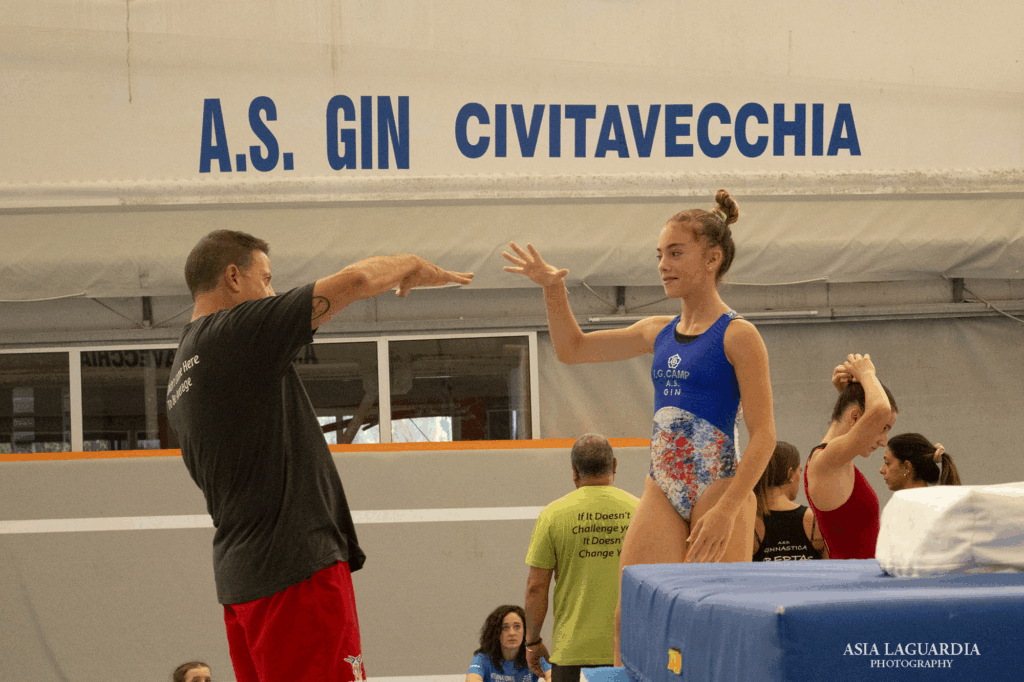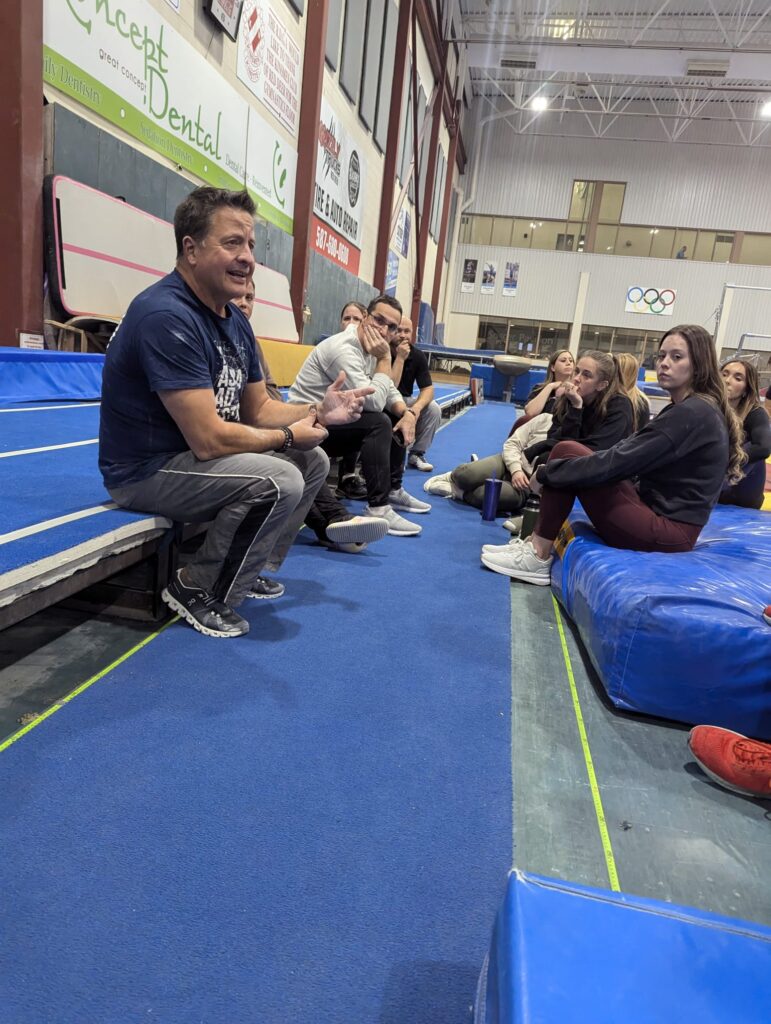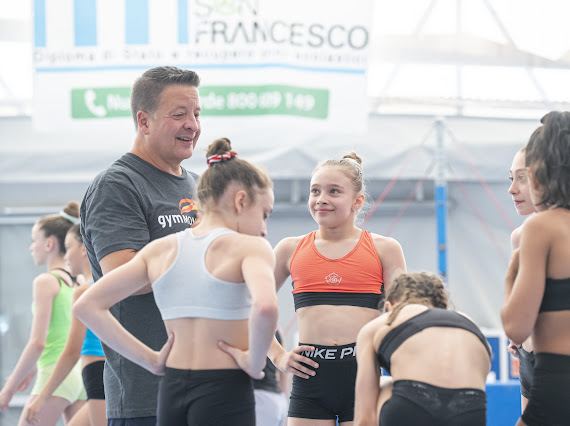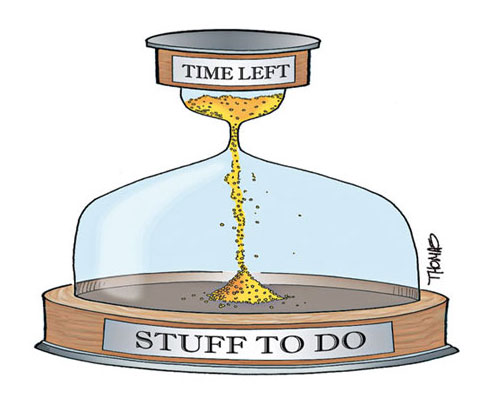
I have had a few messages and e-mails following the training camp asking me how to organize training time in the gym and how long each competitive level should train. Here’s a practical approach based on experience.
Time Allocation: Warm-up, Strength, Skill, Events
- Warm-up and strength: Spend the same amount of time on warm-up and strength as you spend on any event block. For example, if your event training is 30 minutes, allocate 30 minutes to strength. Strength work should always come before skill practice.
- Event training: Think of event time in thirds:
- 1/3 routines (full run-throughs and routine refinement)
- 1/3 basics and problem parts (drills addressing weaknesses)
- 1/3 “move-up” skills (progressions to new skills)
- This balance may shift through the season; for example, prioritize routine refinement as competitions approach.
Event-Specific Strength Examples Strength should be tailored to each event. Examples:
- Vault: single-leg sprints for speed, stuck-landing drills, handstand shoulder shrugs
- Bars: cast handstands (legs together and straddle)
- Beam: pistol squats, handstand holds, leg kick-and-hold, handstand snap-ups, bounding jumps
- Floor: Handstand snap up. Bounding Jumps.
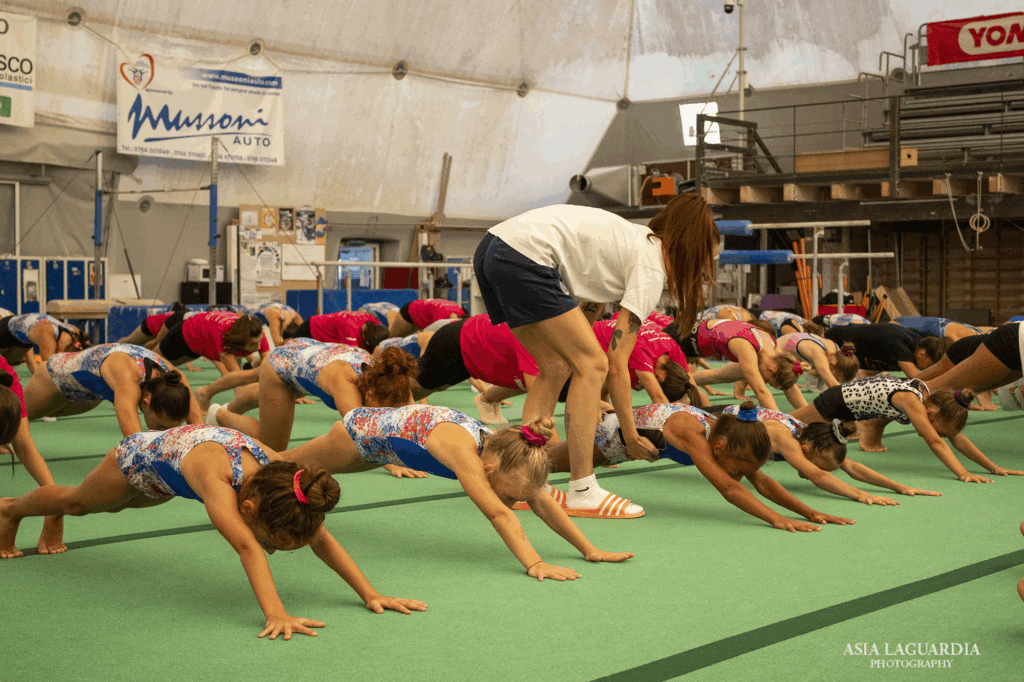
How Long Should Each Level Train? Training time depends on factors like budget, available gym time, coaching ratios, and individual needs. All else equal, more hours generally produce better results. Use the top end of the sport to work backward:
- Elite / Olympic / World championship: 30+ hours/week
- National-level (approx. Level 9/10): ~24 hours/week
- Level 8/9: 16–20 hours/week
- Level 7/8: 12–16 hours/week
- Level 6/7: ~12 hours/week
- Level 5/6: 9–12 hours/week
- Level 4/5: ~9 hours/week
These are guidelines from experience. Individual gymnasts will vary—some will need more time, others can progress with less. Use these ranges as a starting point, then adjust for each athlete’s goals, recovery needs, and resources.
